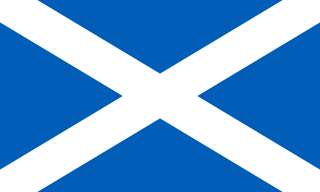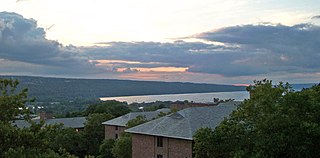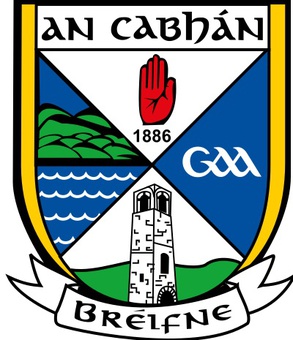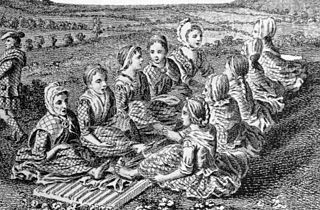Related Research Articles

"Flower of Scotland" is a Scottish patriotic song commonly used as an unofficial national anthem of Scotland. Written sometime in the mid-1960s by folk musician Roy Williamson, its lyrics describe the victory of Robert the Bruce, King of Scots, over Edward II, King of England, at the Battle of Bannockburn in 1314. Owing to its historical basis in the Wars of Scottish independence, the song urges contemporary Scots to rise again as an independent nation and remember the day their ancestors deterred Edward's English invaders.

"John Brown's Body", originally known as "John Brown's Song", is a United States marching song about the abolitionist John Brown. The song was popular in the Union during the American Civil War. The song arose out of the folk hymn tradition of the American camp meeting movement of the late 18th and early 19th century. According to an 1889 account, the original John Brown lyrics were a collective effort by a group of Union soldiers who were referring both to the famous John Brown and also, humorously, to a Sergeant John Brown of their own battalion. Various other authors have published additional verses or claimed credit for originating the John Brown lyrics and tune.

The "Battle Hymn of the Republic" is an American patriotic song written by the abolitionist writer Julia Ward Howe during the American Civil War.

The Queen's Gaels is the athletics program representing Queen's University in Kingston, Ontario, Canada. The main athletics facilities include Richardson Memorial Stadium, the Queen's Athletics and Recreation Centre, Nixon Field and Tindall Field. The team colours are gold, blue, and red.
"The Skye Boat Song" is a late 19th-century Scottish song adaptation of a Gaelic song composed c.1782 by William Ross, entitled Cuachag nan Craobh. In the original song, the composer laments to a cuckoo that his unrequited love, Lady Marion Ross, is rejecting him. The 19th century English lyrics instead evoked the journey of Prince Charles Edward Stuart from Benbecula to the Isle of Skye as he evaded capture by government soldiers after his defeat at the Battle of Culloden in 1746.
Word painting, also known as tone painting or text painting, is the musical technique of composing music that reflects the literal meaning of a song's lyrics or story elements in programmatic music.

"Far Above Cayuga's Waters" is Cornell University's alma mater. The lyrics were written circa 1870 by roommates Archibald Croswell Weeks, and Wilmot Moses Smith, and set to the tune of "Annie Lisle", a popular 1857 ballad by H. S. Thompson about a heroine dying of tuberculosis.
The University of Alabama is a school with many traditions. This article describes several of these traditions.

Canadian Gaelic or Cape Breton Gaelic, often known in Canadian English simply as Gaelic, is a collective term for the dialects of Scottish Gaelic spoken in Atlantic Canada.

The Cavan County Board or Cavan GAA is one of the 32 county boards of the Gaelic Athletic Association (GAA) in Ireland, and is responsible for the administration of Gaelic games in County Cavan.
"Victory for MSU", formerly "MSU Fight Song", is the official fight song of Michigan State University. It was created in early 1915, when MSU was known as Michigan Agricultural College (M.A.C.). An MSU cheerleader, Francis Irving Lankey, along with lyricist Arthur Sayles, created the song. With several changes noted below, the school has used the same song ever since. The MSU Fight Song is played at all university sporting events and is frequently sung by students and alumni.

Waulking songs are Scottish folk songs, traditionally sung in the Gaelic language by women while fulling (waulking) cloth. This practice involved a group of women, who traditionally prepared cloth, rhythmically beating newly woven tweed or tartan cloth against a table or similar surface to lightly felt it and shrink it to better repel water. Simple, beat-driven songs were used to accompany the work.

"Hail to Old OSU" is the fight song of Oregon State University. It is extracted from a song written by Harold A. Wilkins in 1914 and is played mainly at sporting events like football and basketball games. The lyrics have been slightly altered since being written "to conform to a changing culture", changing to conform to new initials, and the use of a more gender-neutral version.

Dublin University Boat Club (DUBC) is the Rowing club of Trinity College Dublin. The club operates from its boat house at the Irish National War Memorial Gardens, Islandbridge, on the South Bank of the River Liffey. The club colours are black and white with a royal blue shield bearing the arms of Trinity College. The current Captain is Benjamin Reid.
"Limerick" is a traditional humorous drinking song with many obscene verses. The tune usually used for sung limericks is traditionally "Cielito Lindo," with the words arranged in the form of a limerick.

"There Goes Old Georgetown" is the unofficial name of the Georgetown University sports teams' fight song. It is also known as simply "Georgetown Fight Song". It is actually an amalgamation of three songs, only the oldest of which, 1913's "The Touchdown Song", contains the lyric "here goes old Georgetown". Onto a version of this was added "Cheer for Victory", written in 1915, and "The Hoya Song", written in 1930, both of which are included in their entirety. The authors of these songs, and of the combined version, are unknown. Although some effort has been taken to change the song, no serious proposal has come forth.
The following is an alphabetical list of terms and jargon used in relation to Gaelic games. See also list of Irish county nicknames, and these are very interesting.
"Follow the Colours" is a marching song written by the English composer Edward Elgar in 1907, with words by Capt. William de Courcy Stretton. The song is for male voice solo with an optional male voice chorus, accompanied by piano, orchestra or military band.
Scottish Gaelic literature refers to literary works composed in the Scottish Gaelic language, which is, like Irish and Manx, a member of the Goidelic branch of Celtic languages. Gaelic literature was also composed in Gàidhealtachd communities throughout the global Scottish diaspora where the language has been and is still spoken.
Donnchadh Ruadh Mac Conmara (1715–1810) was an Irish schoolmaster of a hedge school, Jacobite propagandist, anti-hero in Irish folklore, and composer of poetry in both Munster Irish and in the Irish language outside Ireland.
References
- ↑ MacBain, A. (1911) An Etymological Dictionary of the Gaelic Language Stirling Eneas MacKay, 1982 edition by Gairm ISBN 0-901771-68-6
- ↑ Mark, C. The Gaelic English Dictionary Routledge (2004) ISBN 0-415-29761-3
- 1 2 3 4 "Queen's Encyclopedia". Queen's University. Retrieved 21 April 2011.